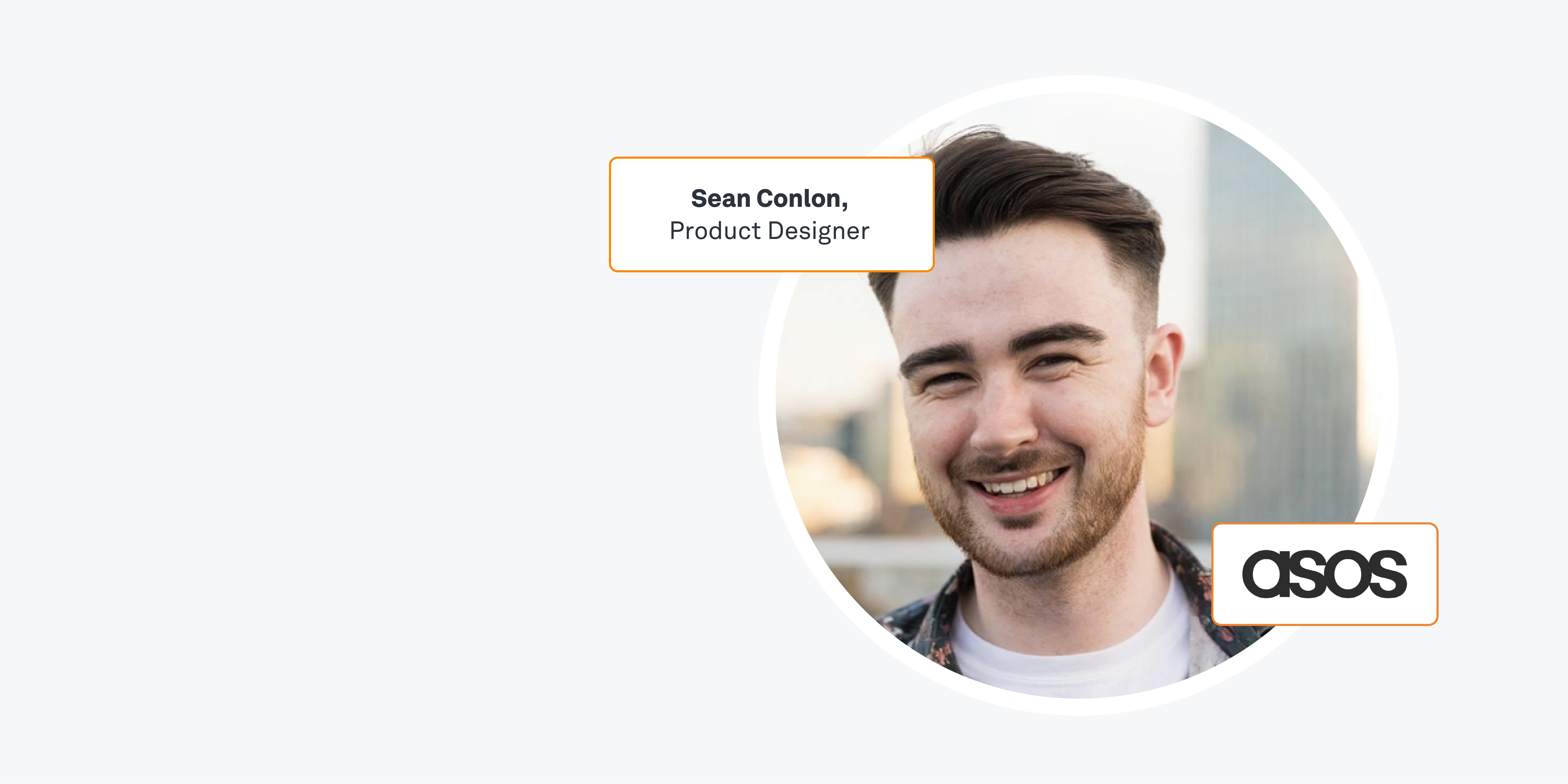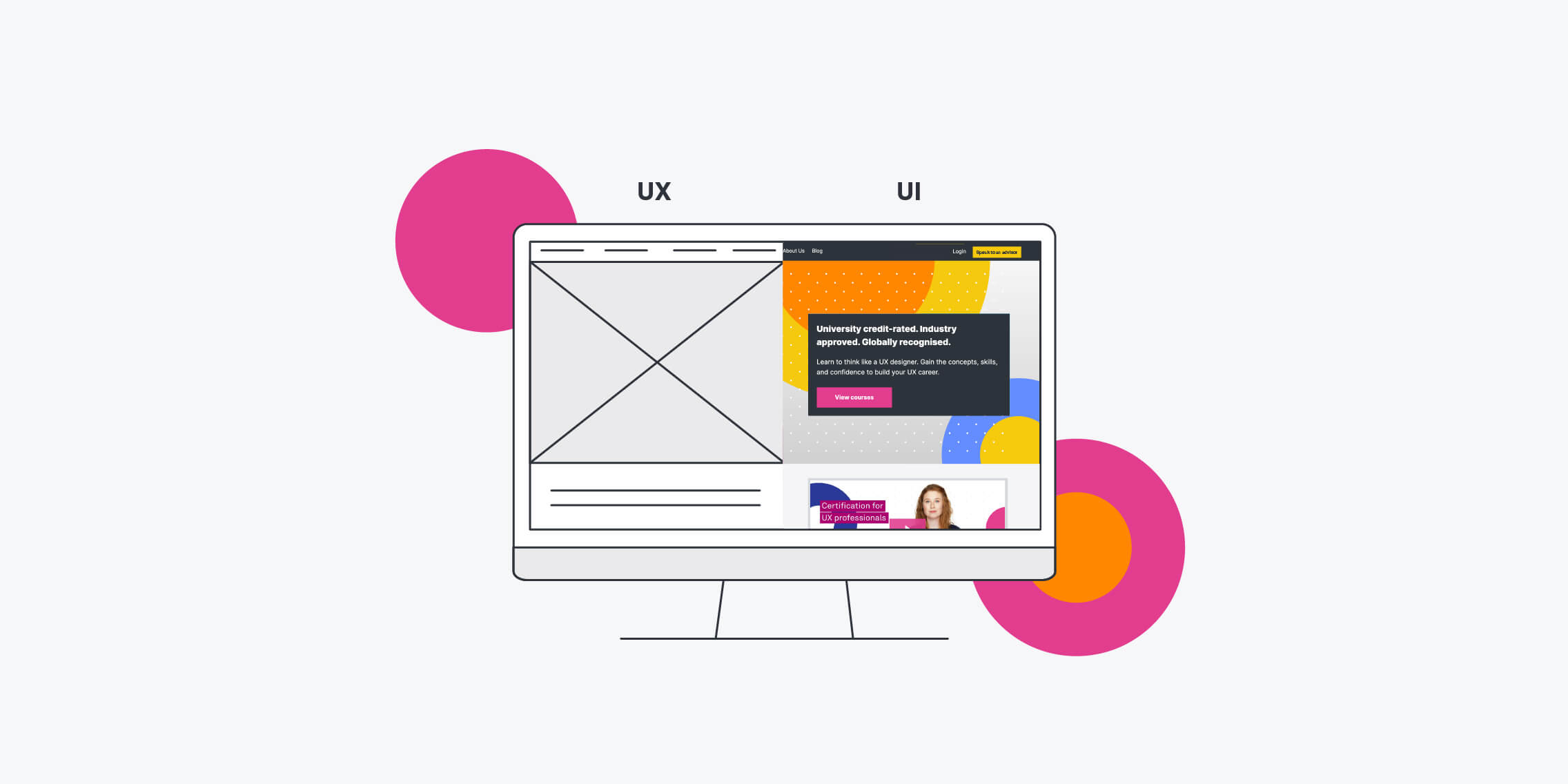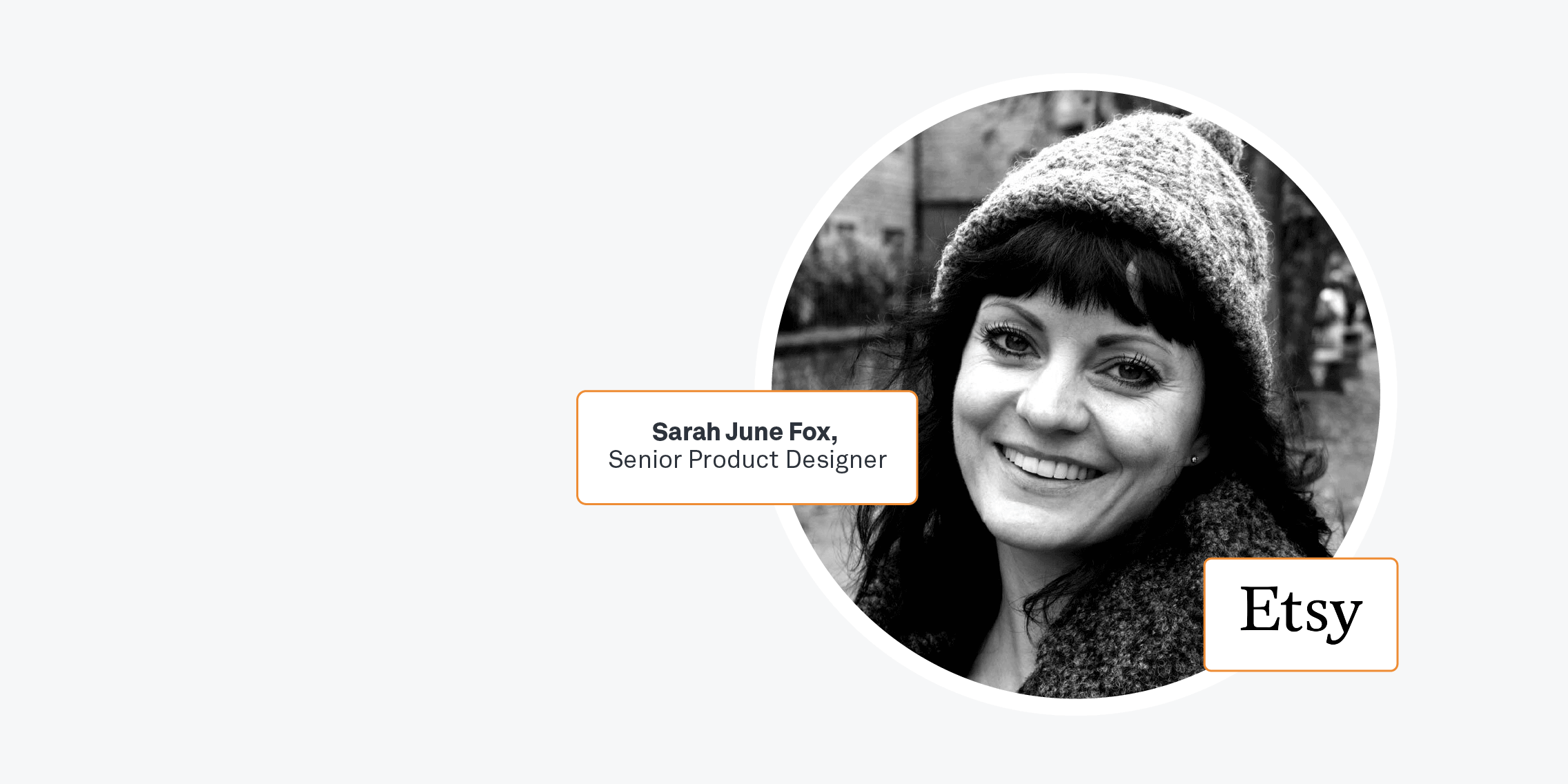Before digital products came into the picture, ‘product designer’ was just another name for an industrial designer: someone who designs manufactured products, like cars or office supplies.
Today, product designers are also responsible for creating digital products like websites, apps, and software.
Product design is a multidisciplinary field, and most product designers have at least some expertise in UX and UI design, project management, business, and even frontend development. Indeed, product designers wear many hats, and the job title can be a source of confusion.
So, what exactly does a product designer do? And how does the role differ from that of a UX designer?
Consider this your ultimate guide. Here’s what we’ll cover:
What is a product designer (UX/UI) and what do they do?
A product designer is a problem-solver at heart. Paying special attention to product form, touchpoints, and functionality, they work through all phases of the product lifecycle from inception to completion.
Crucially, a product designer focuses on both user needs and business goals.
As such, their role spans everything from user research and competitor analysis at the start of the product development process, to creating key deliverables such as site maps, wireframes, prototypes, and UI style guides, and overseeing product testing.
Product designers also play a role in the marketing and branding of a product. They collaborate with marketing teams to develop compelling product narratives, create engaging product presentations, and ensure that the product aligns with the brand’s identity.
How does the role of a product designer vary from company to company?
This sounds like a lot for one role, but bear in mind that product designers rarely work alone. In bigger companies especially, product designers tend to sit within a dedicated product team—a team that also includes project managers, UX designers, UI designers, and developers.
At small companies and startups, however, the scope of a product designer’s role tends to be much broader. In the absence of dedicated UX and UI designers, the product designer may be the only one covering UX, UI, coding, and project management.
No matter where a product designer works, their primary responsibility is to champion the product, ensuring that it’s user-friendly, cost-effective, and aligns with business objectives.
We mentioned that product designers may branch into UX and UI design—which, on paper at least, represent separate roles and disciplines. This can be confusing! So let’s explore further.
What’s the difference between a product designer and a UX designer?
It’s true that ‘product designer’ and ‘UX designer’ constitute distinct roles and job titles. In theory, at least, they’re not the same thing.
But, as we mentioned previously, the reality is often a little more blurred, and the distinction (or lack thereof) between the two roles ultimately depends on the company and the context.
To better understand how the roles differ, let’s first define the role of a UX designer.
What does a UX designer do?
UX designers focus primarily on optimising the overall usability and user experience of the product. Their main goal is to create products that are intuitive, enjoyable, and easy to navigate—and they champion the end user every step of the way.
UX designers:
- Conduct extensive user research to understand the users’ needs, goals, expectations, and pain-points
- Determine what product features and content will resonate most with the target audience
- Define the product’s structure and information architecture, ensuring user-friendly navigation systems and clear hierarchies
- Create wireframes and prototypes
- Test and refine designs
You can learn more about the role of a UX designer in this guide.
UX designer vs. product designer: the main differences
UX designers prioritise the end users’ needs above all else. With every decision they make, they’re aiming to enhance the user’s experience. While business objectives also play a role, they’re secondary to user satisfaction.
Product designers, on the other hand, must take a more holistic approach. They balance user satisfaction against business goals, also weighing up the cost-effectiveness and marketability of the product.
Another key difference is their involvement in the overall product design process. As the product moves from design to development, UX designers may have limited involvement, handing over to UI designers and developers to implement the final design.
Product designers are more holistically involved in the product, overseeing its evolution and success beyond development.
Is there any overlap between product designers and UX designers?
Yes—despite their differences, there’s also plenty of overlap between UX designers and product designers.
They both follow a highly user-centric approach, and they’re both capable of performing many of the same tasks—such as conducting user research, creating personas and journey maps, and designing wireframes and prototypes.
Equally, they both understand business objectives and factor them into their design decisions—albeit to a different extent.
What’s the difference between a product designer and a UI designer?
The difference between UI designers and product designers is a bit more clear-cut. While product designers focus on the broader scope of the product’s functionality, marketability, and user experience, UI designers focus exclusively on the product’s visual and interactive properties.
With that, let’s delve into the specifics of what a UI designer does.
What does a UI designer do?
UI designers are responsible for the visual and interactive design of the product interface (i.e. the user-facing layer). Their tasks typically include:
- Designing pixel-perfect screens and interfaces
- Choosing and applying typography, color palettes, buttons, icons, and logos
- Creating style guides to ensure visual consistency across the product
- Incorporating user feedback to refine design elements
- Balancing user expectations with brand guidelines and business goals
UI designers usually enter into the process after major decisions about the product’s structure and interaction patterns have been made by the UX or product design teams.
For a deeper dive, check out this guide: What does a UI designer do?
UI designer vs. product designer: the main differences
The main difference between a UI designer and a product designer lies in the focus and scope of their responsibilities.
UI designers focus solely on the visual design and interactive elements of digital products. They are experts in colour, layout, typography, icon design, and the transition between screens and pages—essentially anything and everything that shapes the user-facing layer of the product.
Product designers work on a much broader scale. They oversee how the product meets user needs, business goals, and market demands. While they may be responsible for more hands-on UI tasks if they’re working in a smaller team, they don’t typically get so involved in the finer details of the product’s user interface.
Is there any overlap between UI designers and product designers?
UI and product designers both share the common goal of creating visually appealing, user-friendly products. But, in terms of day-to-day tasks, there isn’t much overlap between the two.
Product designers focus on the product’s overall strategy and functionality, while UI designers specialize in translating those ideas into polished, cohesive visuals. They collaborate to ensure that the product balances business goals, user needs, and strong visual appeal.
Now we know how the product designer role differs from UX and UI design, let’s explore the day-to-day tasks of a product designer in more detail.
What are the day-to-day tasks and responsibilities of a product designer (UX/UI)?
Now we’re all on the same page about what a product designer does, you might be wondering how that all plays out on a day-to-day basis.
The fact is that there is no “typical” day for a product designer. With so much to oversee and so many hats to wear, product designers have a large set of responsibilities, including:
- User research to understand end-users’ needs, pain points, and limitations
- Market research to understand product-market fit
- Wireframing to validate and refine designs
- Creating beautiful, dynamic, interactive prototypes
- User testing to understand user interactions and behaviours with the prototypes
- Refining and iterating designs to improve the user experience
- Design documentation—creating detailed design specifications and documentation for the development team
- Collaborating with stakeholders like product managers, developers, marketers, and others to ensure a unified product vision
- Analysing competitor products to stay updated with market trends
- Coordinating and tracking progress to ensure that projects are delivered on time
- Presenting design ideas and rationale to stakeholders and team members
- Developing or maintaining a design system for consistency across products
In summary, the day-to-day tasks and responsibilities of a product designer extend far beyond the product’s surface. They involve extensive research, ideation, visual design, user testing, collaboration, and iterative improvement.
And remember: a product designer’s role can vary significantly depending on the size of the company. In a smaller company or startup, a product designer might be involved in almost every part of the product development process. In a larger company, however, the role of a product designer might be more specialised.
What tools do product designers(UX/UI) use?
Product designers have a lot to do, and they rely on a robust and versatile toolstack throughout the product design process. Luckily, recent innovation in design tools and software has revolutionised how designers conceptualise and develop their ideas.
Here are some of the most important tools that product designers use:
- User research tools: These include analytics tools like Google Analytics and Hotjar, as well as survey tools like SurveyMonkey.
- Wireframing tools like Sketch and Balsamiq.
- Workshopping and whiteboard tools like Miro and Mural.
- Design and prototyping tools like Figma, InVision, Framer, and Adobe XD.
- User testing tools like Lyssna, UserZoom, and Optimizely.
Read next: The ultimate guide to the best UX design tools in 2025.
What are the top skills for a product designer?
If you’re thinking about becoming a product designer, you’ll want to know what kinds of skills to focus on.
Product design isn’t just about technical abilities. It also requires strong analytical skills, creativity, and a knack for problem-solving. At the same time, successful product designers usually demonstrate an in-depth understanding of industry trends and user psychology, as well as the ability to communicate their ideas effectively.
Another major skill is collaboration. Product design is a team effort, so product designers must work harmoniously as part of a team and be able to give and receive feedback.
So what are the most important product designer skills? Let’s take a look:
- Empathy: Product design requires a deep understanding of user needs and pain points in order to design user-friendly, intuitive solutions. It helps to be naturally empathetic, with the ability to put yourself in users’ shoes and advocate for user needs at every stage of the design process.
- Visual design: Even if they’re working alongside UI designers, product designers should be adept at creating appealing, aesthetically pleasing designs. Proficiency in design principles like typography, colour theory, and layout is key.
- Collaboration: Product designers work with various stakeholders across the business, including product managers, developers, and marketers. They need tip-top collaboration and communication skills to ensure everyone is on the same page and working towards a unified vision.
- Problem-solving: Product design is fundamentally about solving problems. Having strong analytical and critical thinking skills is key to developing effective, innovative solutions that meet user needs.
- Business acumen: Understanding the business side of things, like market trends and competitors, is incredibly important. This helps align the product design process with the overall business strategy.
We’ll show you how to learn essential product design skills a bit later on in our guide.
Read next: What skills do you need to be a UX designer?
Do product designers make good money? (2025 update)
For anyone considering a career as a product designer, it’s natural to wonder what kind of salary you might expect.
So: do product designers make good money? Are they well-compensated for their expertise?
Here’s a quick look at the average product designer salary in a handful of locations, based on the latest data from Glassdoor and Indeed:
For a more in-depth look at how much product designers can earn, refer to our full product designer salary guide.
And remember: average salaries are just a benchmark. Employer, location, and expertise all influence your earning potential as a product designer, so we encourage you to do your own research on sites like Glassdoor, Indeed, and Payscale.
Are product designers in demand?
Yes! Product designers are in high demand right now—and the need for skilled product, UX, and UI designers is only growing.
In their Future of Jobs Report 2025, the World Economic Forum names UX and UI designers among the fastest-growing jobs, projecting a net growth rate of about 50% from 2025-2030. That’s a pretty promising statistic!
So what’s driving this demand?
Well, first and foremost: digital transformation. Now more than ever, businesses—and their customers—are relying on digital products and services. If those digital experiences aren’t carefully designed and managed, customers get frustrated and businesses lose out. As such, skilled product designers are integral to success.
And we’re not just talking about the tech sector. Product designers are needed in a whole host of industries—from healthcare and finance to retail, education, government, and even agriculture.
As technology continues to evolve (think about the rise of AI, AR, and VR), product designers will play an increasingly critical role in bridging the gap between humans and technology.
So, if you’re thinking about pivoting to product, UX, or UI design, you can be confident that this is a future-proof career path.
What qualifications do you need to become a product designer?
The good news is that you don’t need a specific degree or qualification to become a product designer. Product design is an incredibly broad and varied discipline—one that requires a whole host of transferable skills.
As such, there’s no single pathway into the field. Product designers come from all sorts of professional and educational backgrounds.
While you don’t need a degree, it’s important that you learn essential product design concepts, principles, processes, and tools both methodically and thoroughly.
Whether you’re moving over from a product-adjacent role or coming in as a novice, it’s worth considering a product design course. This will ensure that you cover all bases—and that you’re getting the necessary hands-on practice to confidently work in the field.
Not only that. A product design qualification awarded by a reputable institution will help you stand out on the job market and validate your skills to potential employers.
On that note, let’s consider exactly what it takes to become a product designer.
How to become a product designer (UX/UI): a step-by-step guide
Becoming a product designer is a rewarding journey, blending creativity, problem-solving, and technology to shape the experiences of users around the world.
Not sure where to start? Here’s a practical, step-by-step breakdown of how to become a product designer.
1. Understand the role
As with any career change, the first step is research. Reading this guide is a great start—you’re already researching the role, the skills required, and the day-to-day responsibilities.
Beyond that, you’ll also want to do some comprehensive reading about the industry, connect with professionals on LinkedIn, and participate in product design forums or communities.
To help you along your way, check out our blog post on the 12 UX communities that are ready to welcome you.
2. Acquire the necessary skills
As we unpacked in previous sections, pursuing product design calls for a blend of technical and soft skills.
You can start learning these skills through online platforms like Youtube or Coursera. This way, you can start building up your skills and seeing whether product design is right for you without a sizable financial or time commitment.
3. Obtain a certification
While a degree isn’t always necessary, having a certificate that proves you’ve gotten some sort of formalised education will go a long way as a new product designer.
Look for a product design programme that combines both UX/UI design skills and shows you how to build a product mindset. A top quality programme will cover everything from understanding user behaviour to crafting intuitive and effective interfaces, giving you the skills to succeed in this rewarding career.
Before you commit to a specific programme, be sure to read this guide: What to look for in a product design course in 2025.
4. Master the tools
Familiarise yourself with the tools that product designers commonly use, and start using them! Becoming proficient in product design tools will allow you to confidently go into your first product design role, knowing you can hit the ground running.
5. Build a portfolio
If you want to get hired as a product designer, you need a strong portfolio to showcase your skills and demonstrate your understanding of the product design process.
Once you’ve started working on product design projects, you can curate a professional portfolio to show hiring managers. If you’re just starting out and don’t have client projects to showcase, work on fictional projects or redesign existing products.
We’ve put together a comprehensive guide on how to create an impressive product design portfolio—check it out.
6. Stay up to date
The field of product design is always evolving. Stay up-to-date with the latest trends, technologies, and practices by reading relevant blogs, books, and articles, and participating in workshops and webinars. This will give you a competitive edge.
Wrapping up
So there you have it—a comprehensive guide to the world of product design! Hopefully, this blog post helped you understand exactly what a product designer does, and how it differs from (and overlaps with) UX and UI design.
Becoming a product designer requires an eye for identifying trends and aesthetics, a technical mind to create functional, user-friendly designs, and the ability to communicate your designs to stakeholders across the business.
What’s more, demand for versatile product designers is sky-high—so it’s a great time to segway into the field. If you’re ready to master essential product design skills, check out the UX Design Institute’s university credit-rated Product Design (UX/UI) Programme.
If you’d like to learn more about the industry before you take the next step, we think you’ll enjoy the following:
- What separates great designers from good ones? An interview with Adam Glynn-Finnegan, Staff Product Designer at Netflix Studio
- 3 tips for product designers: An interview with Emmet Connolly, VP of Product Design at Intercom
- 5 inspiring product design examples (and what we can learn from them)
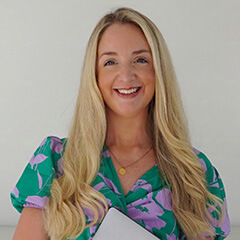
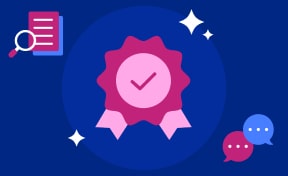
![What does a product designer (UX/UI) do? Role, skills and salaries - a complete guide [2025] 1 A product designer at work.](png/znmadfas.png)
![What does a product designer (UX/UI) do? Role, skills and salaries - a complete guide [2025] 2 screenshot of salaries from glass door](png/screenshot-2025-04-04-at-15.50.01.png)
